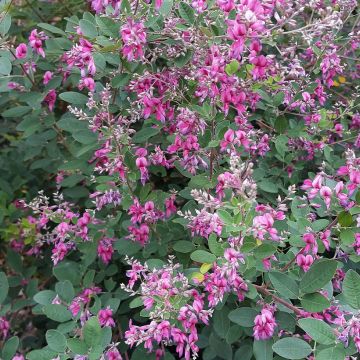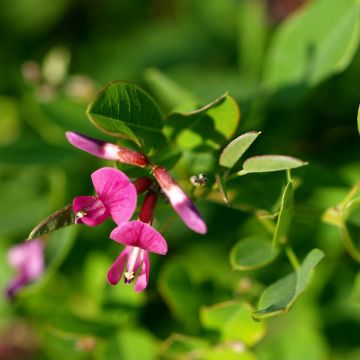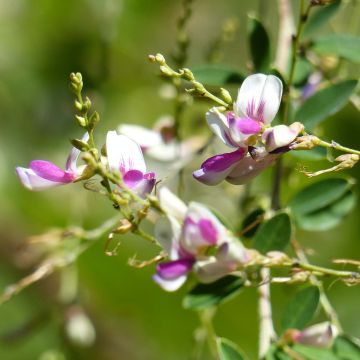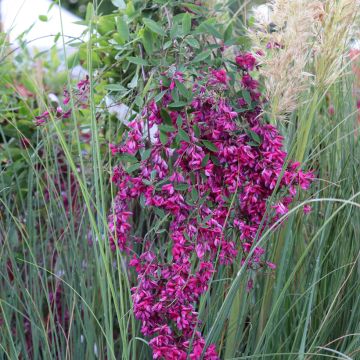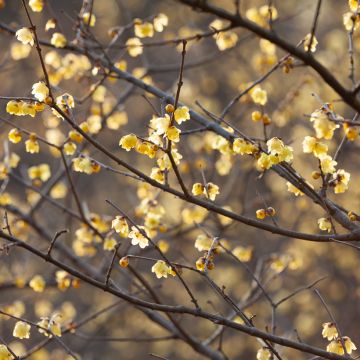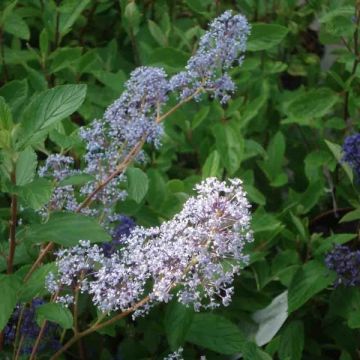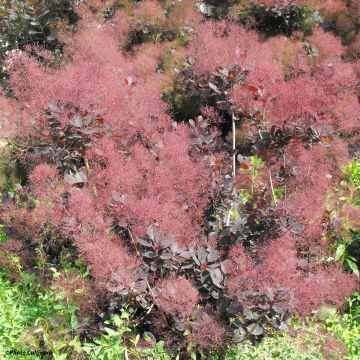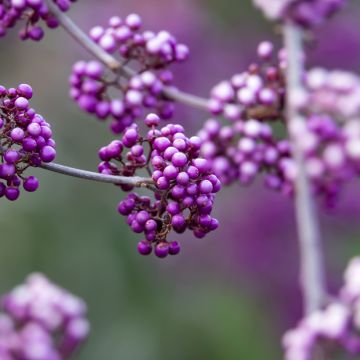

Lespedeza bicolor Summer Beauty
Lespedeza bicolor Summer Beauty
Lespedeza bicolor Summer Beauty
Bush clover
Special offer!
Receive a €20 voucher for any order over €90 (excluding delivery costs, credit notes, and plastic-free options)!
1- Add your favorite plants to your cart.
2- Once you have reached €90, confirm your order (you can even choose the delivery date!).
3- As soon as your order is shipped, you will receive an email containing your voucher code, valid for 3 months (90 days).
Your voucher is unique and can only be used once, for any order with a minimum value of €20, excluding delivery costs.
Can be combined with other current offers, non-divisible and non-refundable.
Why not try an alternative variety in stock?
View all →This plant carries a 24 months recovery warranty
More information
We guarantee the quality of our plants for a full growing cycle, and will replace at our expense any plant that fails to recover under normal climatic and planting conditions.
Would this plant suit my garden?
Set up your Plantfit profile →
Description
Lespedeza bicolor 'Summer Beauty' is a superb variety of bush clover whose vividly coloured flowering truly enchants the entire second half of summer. With a very graceful, fountain-like habit, this semi-woody plant offers clusters of pea flowers in shades of purplish pink, mauve and lilac at the end of its strong but flexible branches. Its light foliage, divided into leaflets, reminds us that it is an elegant member of the Fabaceae family. Not very demanding in terms of soil type, Lespedeza will prefer it to be well-drained and light, not too dry and not too poor, to enhance flowering. It excels in the background of a flower bed, overlooking a wall or in a large pot on the terrace!
Lespedeza bicolor 'Summer Beauty' is a horticultural selection. The species type is mainly native to China and Japan. It is a shrub with a woody base and annual stems in climates that regularly suffer from frosts. The stems, in this bicolor species, are more woody and stronger than those of its close relative, Lespedeza thunbergii. Its leaflets are more rounded and its flowers are larger and even more decorative. In cultivation it has few requirements, other than heat and full sun. Relatively economical with water, it doesn't however like very arid situations, high alkalinity, or overly heavy, clayey soils. While not very sensitive to cold when mature, it does require good protection around the stump when young. The root system of this plant is superficial and equipped with nitrogen-fixing nodes, reflecting good adaptation to degraded soils.
The 'Summer Beauty' bush clover forms a large sheaf of upright stems emerging from the stump from spring. It will reach about 1.30 m (4 ft) in height and 1.50 m (5 ft) in width within a few years. The stems are more or less destroyed by frost in winter, without harming the plant. The foliage, deciduous, resembles that of clover: it is composed of leaves cut into 3 rounded leaflets, measuring 3 to 5 cm (1.2 to 2 in) long, slightly bluish green, turning yellow before falling. Flowering takes place between July and September, lasting approximately 4 weeks. It takes the form of long thin clusters of papilionaceous flowers, whose weight slightly bends the branches. Nectar- and honey-producing, it is much visited by bees, bumblebees and butterflies.
The abundant flowering of Lespedeza is welcome at the end of summer, like that of autumn asters and shrub sages. Its habit is unusual, and its foliage contrasts with more classic foliage. As such the bush clover is an architectural and beautifully coloured plant, useful for creating contrast and highlights in the garden. Easy to grow and undemanding, it is perhaps above a wall or a retaining wall that it will most grab the attention. It will also create great effect in a large rockery among carpets of thyme, Ceratostigma plumbaginoides, and tufts of Erigeron karvinskianus. Also superb in combination with Perovskias with their beautiful soft blue flowers, or the silver foliage of the Powis Castle artemisia. Match the shrub's colours with other shades of blue, mauve and pink, or contrast it with yellow flowers for example.
Report an error about the product description
Lespedeza bicolor Summer Beauty in pictures


Plant habit
Flowering
Foliage
Botanical data
Lespedeza
bicolor
Summer Beauty
Fabaceae
Bush clover
Cultivar or hybrid
Other Lespedeza
View all →Planting and care
Lespedeza bicolor Summer Beauty is planted at the start of spring or the beginning of autumn. It needs a sunny site. Install it in well-drained, light and rather rich soil by adding some compost and river sand to your garden soil. This plant is relatively resistant to cold winds and possible droughts, but watering in hot climates will improve flowering. In order to promote good rooting, water abundantly at planting as well as regularly during the first two summers. Avoid pruning before winter, as with shrubby sages, and wait until the return of spring. At that point cut back to 30-40 cm from the ground, when the risk of hard frosts has passed. Vegetation restarts somewhat late - don't be concerned. Young plants will appreciate a thick protective mulch on their stump in winter, which will help cope them cope with hard frosts. The bush clover has few natural enemies but some gastropods enjoy its young shoots, so be sure to protect young plants from slugs and snails!
Planting period
Intended location
Care
This item has not been reviewed yet - be the first to leave a review about it.
Similar products
Haven't found what you were looking for?
Hardiness is the lowest winter temperature a plant can endure without suffering serious damage or even dying. However, hardiness is affected by location (a sheltered area, such as a patio), protection (winter cover) and soil type (hardiness is improved by well-drained soil).

Photo Sharing Terms & Conditions
In order to encourage gardeners to interact and share their experiences, Promesse de fleurs offers various media enabling content to be uploaded onto its Site - in particular via the ‘Photo sharing’ module.
The User agrees to refrain from:
- Posting any content that is illegal, prejudicial, insulting, racist, inciteful to hatred, revisionist, contrary to public decency, that infringes on privacy or on the privacy rights of third parties, in particular the publicity rights of persons and goods, intellectual property rights, or the right to privacy.
- Submitting content on behalf of a third party;
- Impersonate the identity of a third party and/or publish any personal information about a third party;
In general, the User undertakes to refrain from any unethical behaviour.
All Content (in particular text, comments, files, images, photos, videos, creative works, etc.), which may be subject to property or intellectual property rights, image or other private rights, shall remain the property of the User, subject to the limited rights granted by the terms of the licence granted by Promesse de fleurs as stated below. Users are at liberty to publish or not to publish such Content on the Site, notably via the ‘Photo Sharing’ facility, and accept that this Content shall be made public and freely accessible, notably on the Internet.
Users further acknowledge, undertake to have ,and guarantee that they hold all necessary rights and permissions to publish such material on the Site, in particular with regard to the legislation in force pertaining to any privacy, property, intellectual property, image, or contractual rights, or rights of any other nature. By publishing such Content on the Site, Users acknowledge accepting full liability as publishers of the Content within the meaning of the law, and grant Promesse de fleurs, free of charge, an inclusive, worldwide licence for the said Content for the entire duration of its publication, including all reproduction, representation, up/downloading, displaying, performing, transmission, and storage rights.
Users also grant permission for their name to be linked to the Content and accept that this link may not always be made available.
By engaging in posting material, Users consent to their Content becoming automatically accessible on the Internet, in particular on other sites and/or blogs and/or web pages of the Promesse de fleurs site, including in particular social pages and the Promesse de fleurs catalogue.
Users may secure the removal of entrusted content free of charge by issuing a simple request via our contact form.
The flowering period indicated on our website applies to countries and regions located in USDA zone 8 (France, the United Kingdom, Ireland, the Netherlands, etc.)
It will vary according to where you live:
- In zones 9 to 10 (Italy, Spain, Greece, etc.), flowering will occur about 2 to 4 weeks earlier.
- In zones 6 to 7 (Germany, Poland, Slovenia, and lower mountainous regions), flowering will be delayed by 2 to 3 weeks.
- In zone 5 (Central Europe, Scandinavia), blooming will be delayed by 3 to 5 weeks.
In temperate climates, pruning of spring-flowering shrubs (forsythia, spireas, etc.) should be done just after flowering.
Pruning of summer-flowering shrubs (Indian Lilac, Perovskia, etc.) can be done in winter or spring.
In cold regions as well as with frost-sensitive plants, avoid pruning too early when severe frosts may still occur.
The planting period indicated on our website applies to countries and regions located in USDA zone 8 (France, United Kingdom, Ireland, Netherlands).
It will vary according to where you live:
- In Mediterranean zones (Marseille, Madrid, Milan, etc.), autumn and winter are the best planting periods.
- In continental zones (Strasbourg, Munich, Vienna, etc.), delay planting by 2 to 3 weeks in spring and bring it forward by 2 to 4 weeks in autumn.
- In mountainous regions (the Alps, Pyrenees, Carpathians, etc.), it is best to plant in late spring (May-June) or late summer (August-September).
The harvesting period indicated on our website applies to countries and regions in USDA zone 8 (France, England, Ireland, the Netherlands).
In colder areas (Scandinavia, Poland, Austria...) fruit and vegetable harvests are likely to be delayed by 3-4 weeks.
In warmer areas (Italy, Spain, Greece, etc.), harvesting will probably take place earlier, depending on weather conditions.
The sowing periods indicated on our website apply to countries and regions within USDA Zone 8 (France, UK, Ireland, Netherlands).
In colder areas (Scandinavia, Poland, Austria...), delay any outdoor sowing by 3-4 weeks, or sow under glass.
In warmer climes (Italy, Spain, Greece, etc.), bring outdoor sowing forward by a few weeks.






























